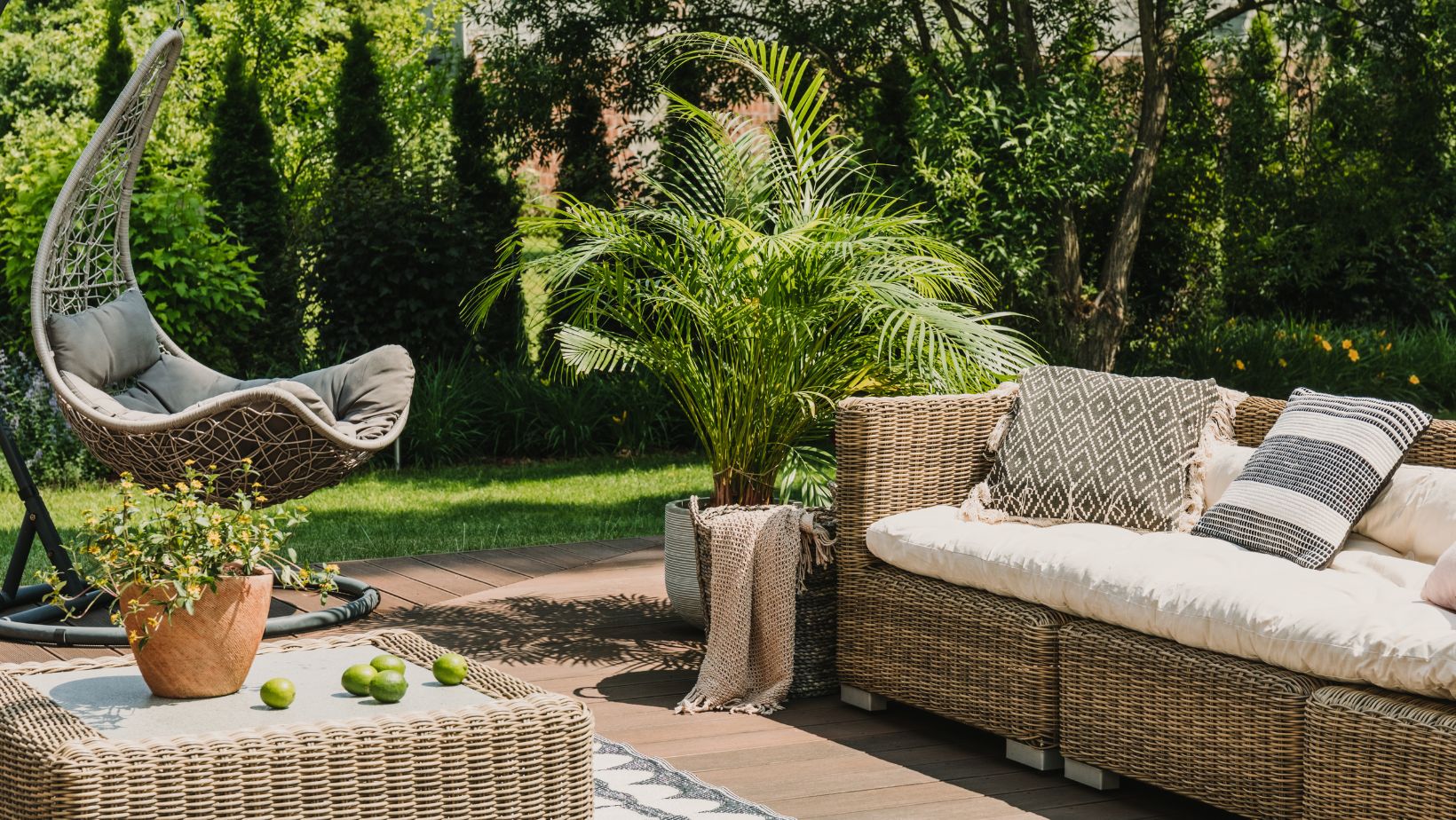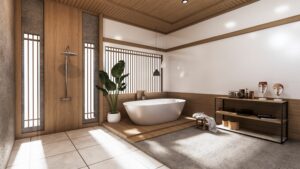Key Takeaways
- Pinterest as a Resource: Pinterest is an invaluable platform for discovering diverse home garden design ideas, catering to both novice and experienced gardeners.
- Design Trends: The platform showcases various popular styles, including modern minimalism, rustic charm, and tropical oasis, each offering unique aesthetics and functionalities.
- Key Design Elements: Effective home garden design involves thoughtful layout, strategic plant selection, and attention to aesthetics to create a cohesive outdoor space.
- Creating Inspiration Boards: To create effective design boards, select high-quality pins, divide them into sections by style, and keep descriptions clear for easy reference.
- Implementation Tips: Focus on choosing climate-appropriate plants and creating a functional layout with defined zones, clear pathways, and focal points to enhance the garden experience.
- Engagement & Updates: Regularly update your Pinterest board with new ideas and engage with other users for continuous inspiration and creativity in your garden design journey.
In the age of digital inspiration, Pinterest has become a treasure trove for home garden design ideas. With its endless scrolling and vibrant visuals, it’s easy to get lost in a world of lush landscapes and creative layouts. Whether someone is a seasoned gardener or just starting out, Pinterest offers a wealth of resources that can transform any outdoor space into a personal oasis.
From small urban gardens to sprawling backyard retreats, users can discover unique styles and practical tips that suit their tastes and needs. With just a few clicks, they can curate boards filled with stunning plants, innovative layouts, and DIY projects that breathe life into their home gardens. Embracing the power of Pinterest can make the journey of designing a garden not only enjoyable but also incredibly rewarding.
Home Garden Design Pinterest
Pinterest serves as a central hub for exploring home garden design trends. Users find innovative ideas that cater to diverse tastes and preferences.
Inspiration from Pinterest
Pinterest showcases a myriad of garden styles, ranging from modern minimalism to rustic charm. Users discover inspirational images, color palettes, and plant combinations that spark creativity. Gardeners utilize these ideas to create cohesive outdoor environments that reflect individual aesthetics. Popular boards include themes like vertical gardens, edible landscapes, and sustainable gardening practices.
Key Elements of Design
Effective home garden design incorporates vital elements such as layout, plant selection, and aesthetics.
- Layout: Arranging pathways, seating areas, and plant beds defines the garden’s structure.
- Plant Selection: Choosing a mix of perennials, annuals, and shrubs ensures year-round interest and diversity.
- Aesthetics: Incorporating color theory and texture enhances visual appeal, contributing to a harmonious environment.
Embracing these elements enables gardeners to develop unique spaces that resonate with their personal style and functional needs.
Popular Styles in Home Garden Design
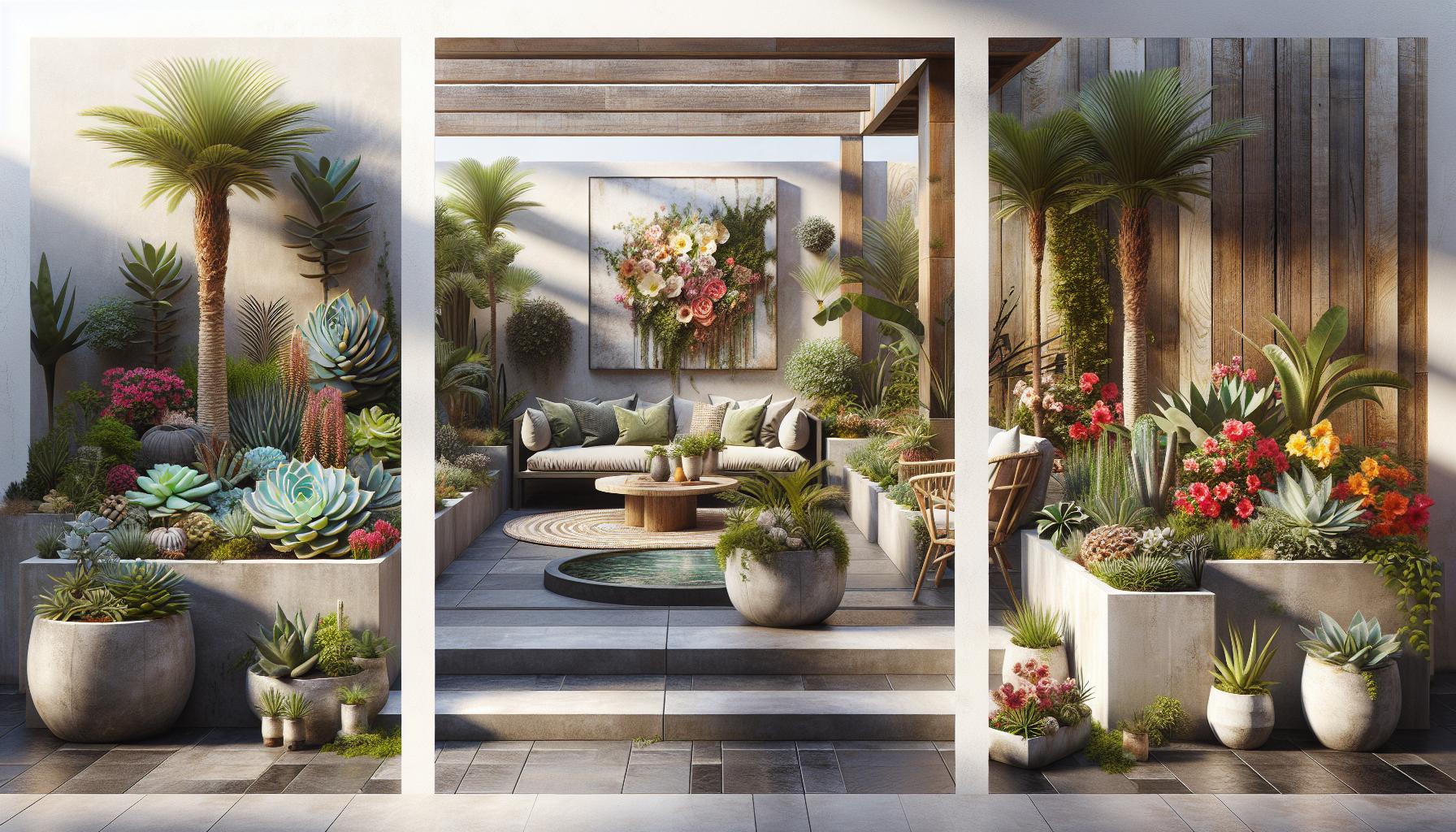
Pinterest showcases various popular styles in home garden design that inspire gardeners with distinct aesthetics and functionalities.
Modern Minimalism
Modern minimalism emphasizes clean lines, simplicity, and a monochromatic palette. This style often features a limited plant selection, focusing on architectural plants like succulents or ornamental grasses. Furniture tends to be streamlined, with an emphasis on functionality. Incorporating hardscaping elements such as gravel paths or concrete planters enhances the minimalist appeal while facilitating low-maintenance gardens.
Rustic Charm
Rustic charm draws inspiration from natural landscapes and traditional farmhouses. This style incorporates reclaimed wood features, stone pathways, and cottage-style plants like peonies, lavender, and daisies. Garden furniture, often made of weathered wood or wrought iron, adds to the cozy atmosphere. Utilizing varied textures and colors creates a welcoming environment that invites relaxation and enjoyment of the outdoors.
Tropical Oasis
Tropical oasis gardens exude vibrancy and lushness, characterized by exotic plants and bold colors. Species such as hibiscus, palm trees, and ferns dominate the landscape, creating a lush, layered effect. Water features, like ponds or fountains, enhance the tropical feel while providing a soothing sound. Incorporating outdoor seating with vibrant textiles fosters a tranquil retreat, making the garden a perfect escape from daily life.
How to Create a Home Garden Design Board on Pinterest
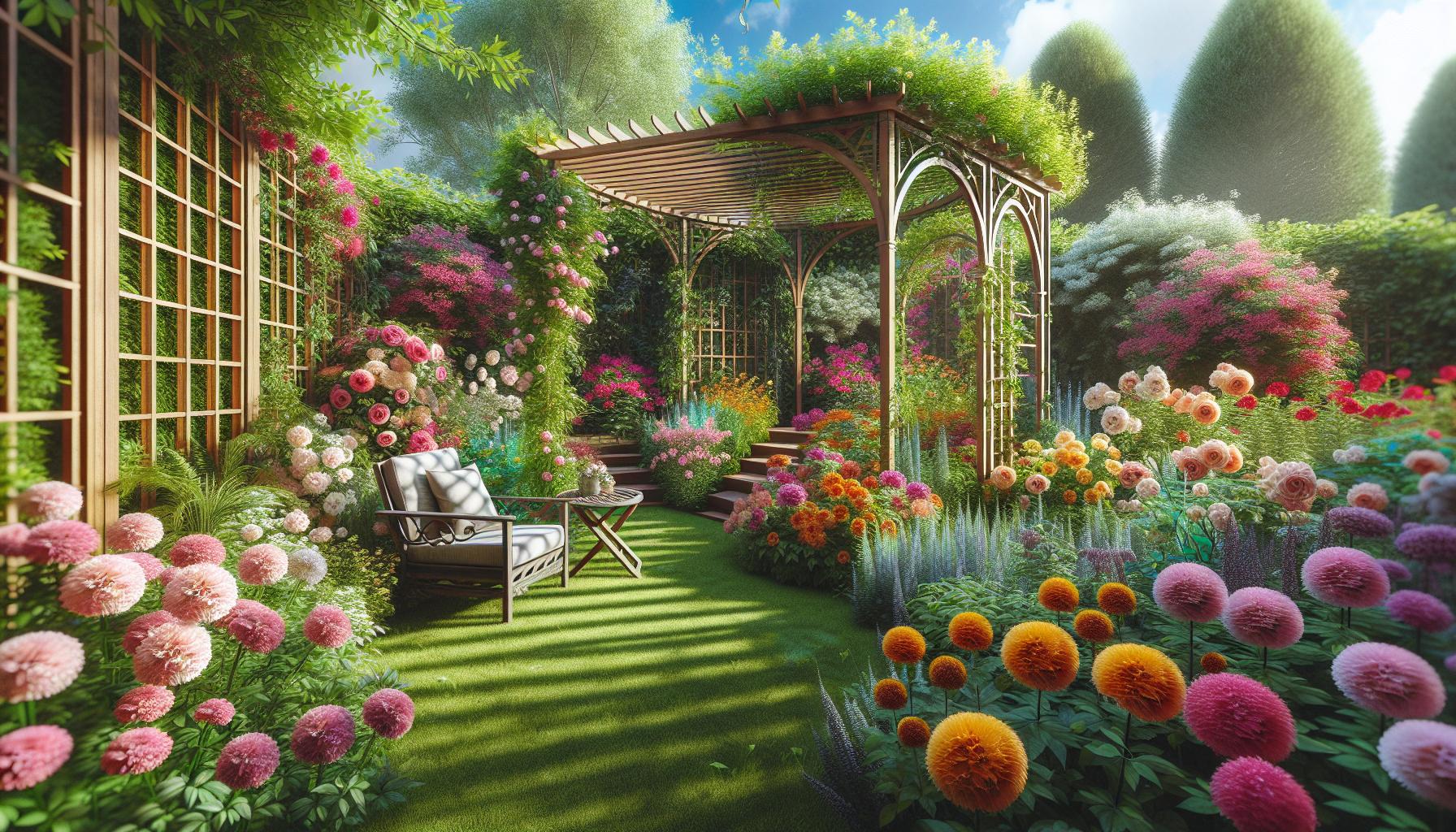
Creating a home garden design board on Pinterest involves thoughtful curation and organization of ideas. Users can effectively capture their vision by following key steps.
Selecting the Right Pins
Selecting the right pins is essential for a cohesive garden design board. Users should focus on high-quality images that showcase various garden styles and elements. Look for pins that feature:
- Diverse styles: Include pins from modern minimalism, rustic charm, and tropical oasis themes.
- Inspirational layouts: Seek designs that highlight effective space usage and visual appeal.
- DIY projects: Incorporate pins that offer practical tips for implementing designs.
- Color palettes: Choose images that display harmonious color combinations for plant selection.
- Plant pairings: Gather examples of successful plant combinations for inspiration.
- Create sections: Divide the board into sections for different styles or garden types, such as vegetable gardens, flower beds, or patio designs.
- Prioritize visuals: Position the most visually striking pins at the top for immediate impact.
- Add descriptions: Include short descriptions for each pin to clarify the design concept or technique.
- Update regularly: Refresh the board frequently by adding new pins and removing outdated or less relevant ones.
- Engage with others: Follow like-minded users, repin their content, and engage with their designs for broader inspiration.
Tips for Implementing Your Home Garden Design
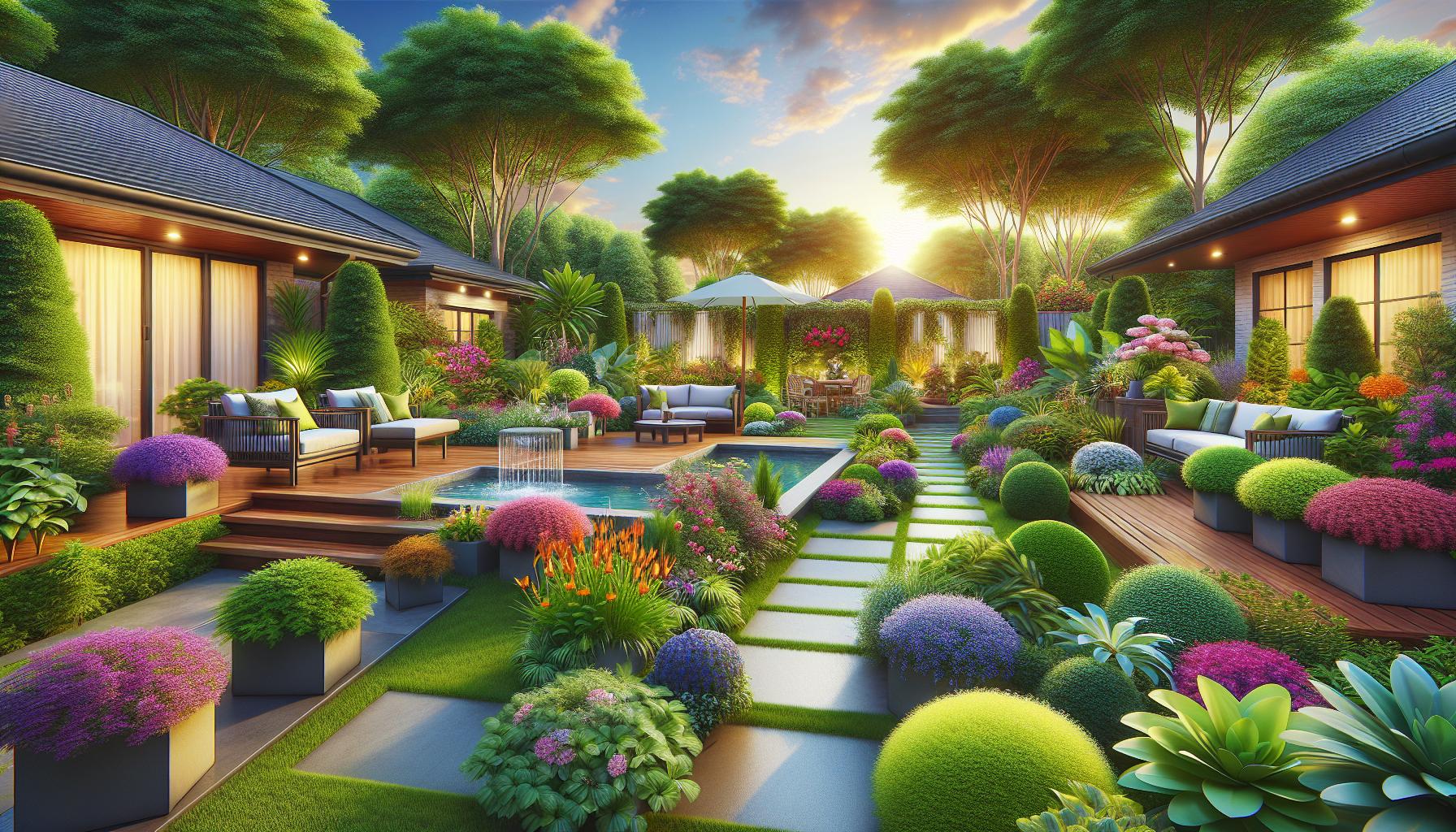
Implementing a home garden design requires thoughtful execution of various elements. Attention to detail in plant selection and layout ensures a cohesive and functional space.
Choosing the Right Plants
Selecting the right plants enhances the visual appeal and functionality of the garden. Consider the following aspects:
- Climate: Choose plants suited to the local climate for better growth and sustainability.
- Sunlight: Assess sunlight availability in different garden areas and select plants accordingly.
- Maintenance: Opt for low-maintenance plants if time for upkeep is limited.
- Color palette: Select plants that complement each other for a harmonious look.
- Diversity: Include a mix of flowering, foliage, and structural plants for year-round interest.
Layout and Flow
Creating an effective layout contributes to the garden’s overall ambiance and usability. Keep these factors in mind:
- Pathways: Design clear pathways to guide visitors through the garden.
- Zones: Define areas for specific purposes, such as seating, dining, or play.
- Focal points: Incorporate focal points, such as sculptures or water features, to attract attention.
- Height variation: Arrange plants at various heights to add texture and depth.
- Functional space: Ensure seating areas are positioned for optimal views and accessibility.
By carefully choosing plants and designing an effective layout, a home garden transforms into a delightful outdoor retreat.
Transforming a home garden can be an exciting journey filled with creativity and inspiration. Pinterest serves as a powerful tool for anyone looking to enhance their outdoor spaces. With its vast array of styles and ideas, users can easily find the perfect design that resonates with their personal taste.
By curating boards and engaging with the community, gardeners can refine their vision and gather practical tips. Whether opting for modern minimalism or a lush tropical oasis, the right design can turn any garden into a stunning retreat. Embracing the insights gained from Pinterest can lead to a beautifully designed garden that reflects individual style and functionality.
